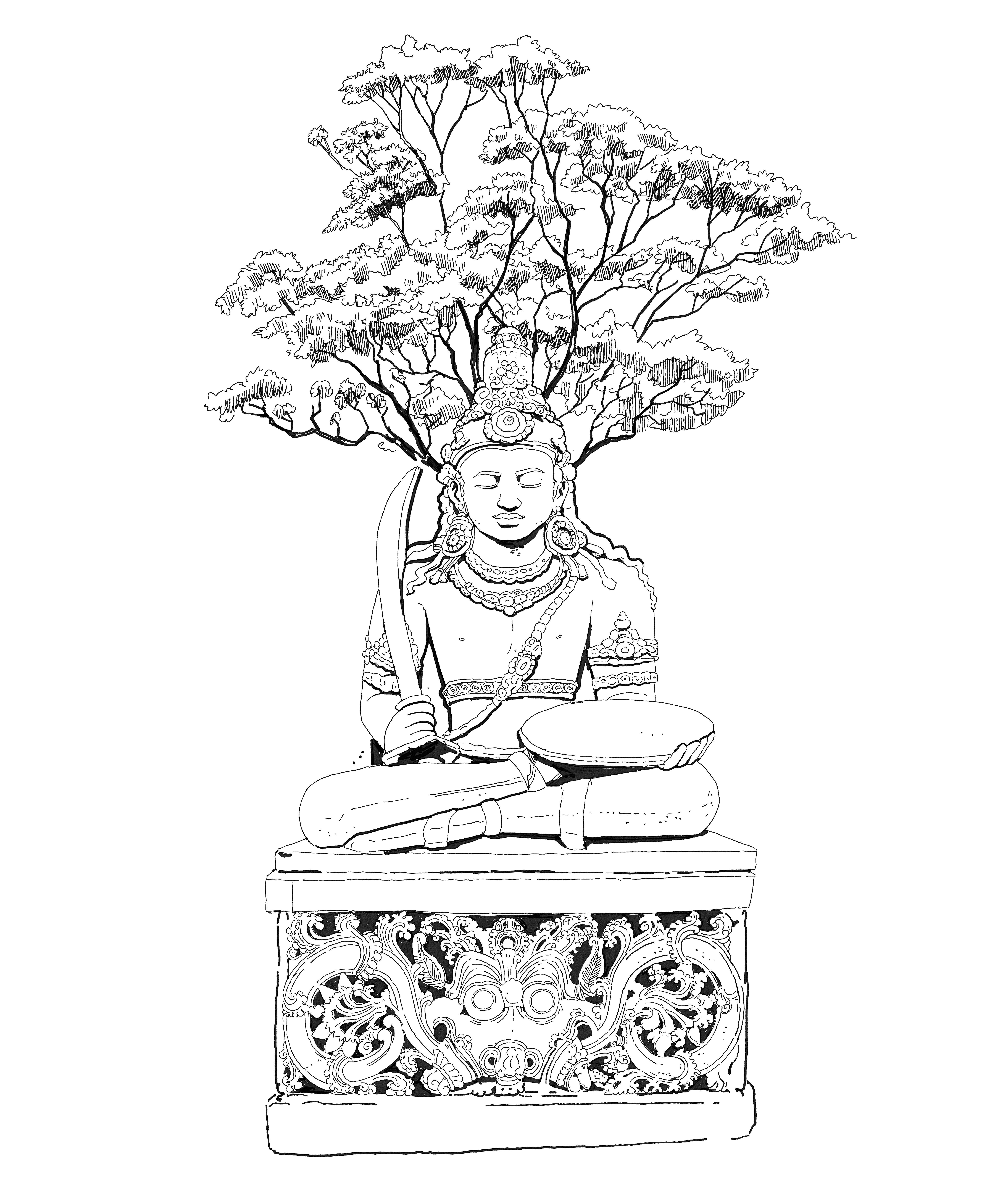
In the ancient annals of the Hoysala dynasty, the tale of Sala, the progenitor of this illustrious family, unfolds like a tapestry woven with threads of mystery and heroism. It’s a saga retold through inscriptions, each narrating the pivotal incident that propelled Sala to the throne and bestowed upon his lineage a name synonymous with valor.
Here’s how the popular story goes:
In the ancient chronicles of the Hoysala dynasty, there unfolds a tale of Sala, a young lad whose origins trace back to a quaint village nestled in the Western Ghats. Within the sacred confines of a temple in Angadi, he and his venerable teacher encountered a moment steeped in peril as a menacing tiger approached. In a pivotal exchange, the teacher bequeathed unto Sala a dagger, uttering the directive “Poy Sala,” a command that resonates as ‘strike Sala’ in translation. With singular valor, Sala wielded the dagger, felling the tiger with a decisive blow. From that epochal day forth, he ascended to the mantle of the dynasty’s progenitor, guiding the Hoysala lineage in its rule over the expanse of South India for an enduring span exceeding three centuries.
Inscription – Bl. 171
According to the earliest inscription, Sala’s ascent to power began on the slopes of the Sahya mountains [Western Ghats], where he found himself amidst a peculiar spectacle—a hare chasing a tiger. Sala recognizing the heroic aura of the soil to himself. A revered sage, a Jina muni, at that very moment, urged Sala to strike, leading to the birth of the Hoysala name. Sala, without hesitation, wielded his dagger, putting an end to the tiger’s menace—a scene that later became the emblematic Hoysala crest.
Inscription – Hn. 66
Another version, as recounted, echoes a similar sentiment. Sala, on a hunting expedition along the Western Ghats, faced a challenge orchestrated by the sage. In this rendition, there’s no hare, but the essence remains—the sage tested Sala’s mettle by commanding him to slay a tiger, a task Sala executed without a second thought.
Inscription – Ak. 71
The narrative takes a mystical turn in this one, where Sala as a result of service and devotion to the yogindra, pleases the Jaina Muni that the sage feels that sala deserves an empire to rule. In order to gain the blessings of the goddess Vasantika of Shakyapura the yogindra asks sala for perform a ritual. It is during this penance, that the goddess decides to test the pupil of the great yogi by appearing infront of him as a fierce tiger. But without a moment’s hesitation or fear Sala spurs at the yogi’s exclamation into action, and with a cane (betta), he vanquishes the tiger—a testament to his divine destiny.
Inscription – Bl. 112, Ak. 82
Diverse interpretations emerge in subsequent inscriptions. refers to the weapon as a cane rod (bettava sele), while Ak. 82 clarifies that sele in the body of the inscription equates to betta.
Inscription – Ak. 108
This introduces the term kunchada sele, a rod associated with the yogi’s fan, adorned with peacock feathers and enchanted with mystical mantras. It emphasizes that Sala’s weapon was no ordinary cane but a sacred bamboo rod.
Inscription – Bl. 74
In a distinctive account presented in this, Sala’s weapon is described as a laldhi, typically an iron rod but possibly a pointed stick. This variation, though not fitting the Jain tradition of Jain sanyasis not coming to contact with metal of any sorts, adds an intriguing layer to the multifaceted legacy of Sala.
Beyond the inscriptions and historical nuances, Sala transcends mere myth—a timeless figure who has inspired over 400 years of golden rule by the hoysalas.

In homage to this legendary hero, we bring you “THE SALA – a Hoysala-inspired themed resort,” a property that captures the spirit of Sala and the Hoysala dynasty. Just as Sala’s story has endured through the ages, our resort aims to evoke the same sense of awe and inspiration that Sala instilled in the hearts of those who came before us. Step into the mystical world of Sala, where history, heroism, and hospitality converge in an unforgettable experience.
[Source] From Epigraphia Carnatica -Vol. V | By Benjamin Lewis Rice
